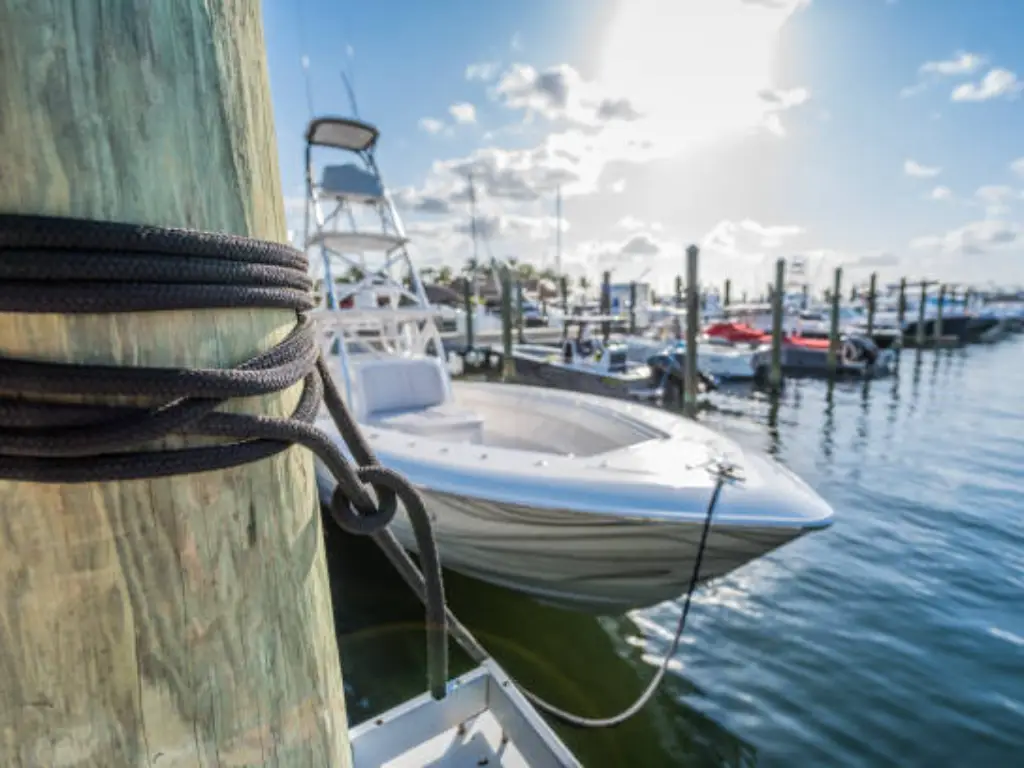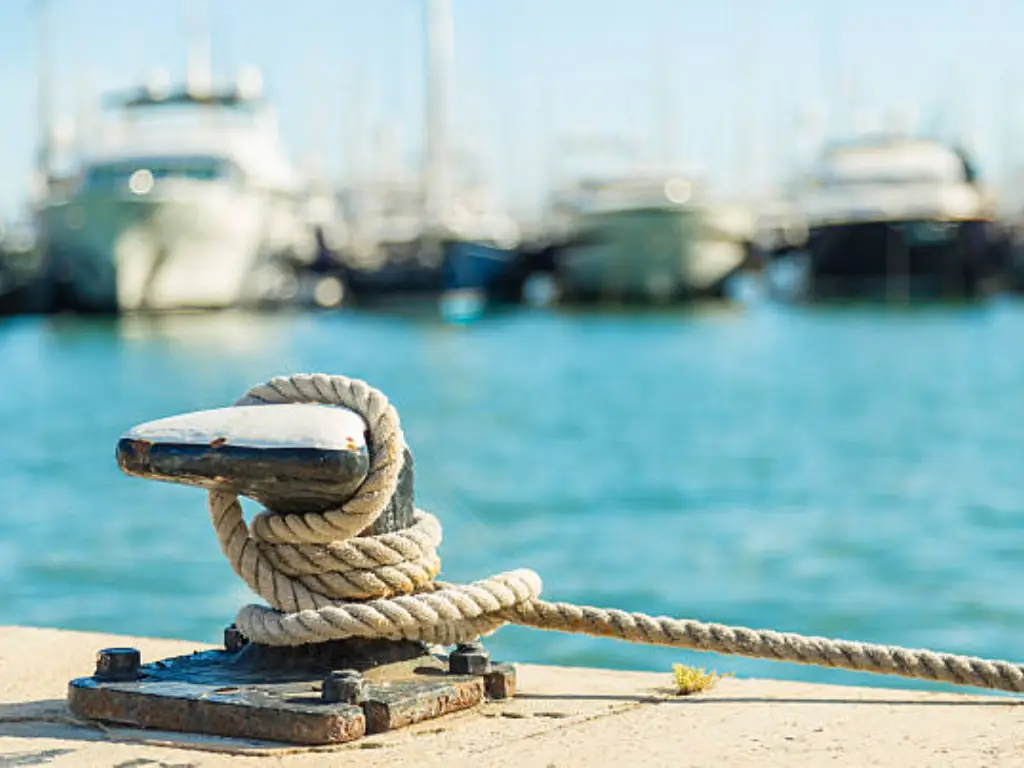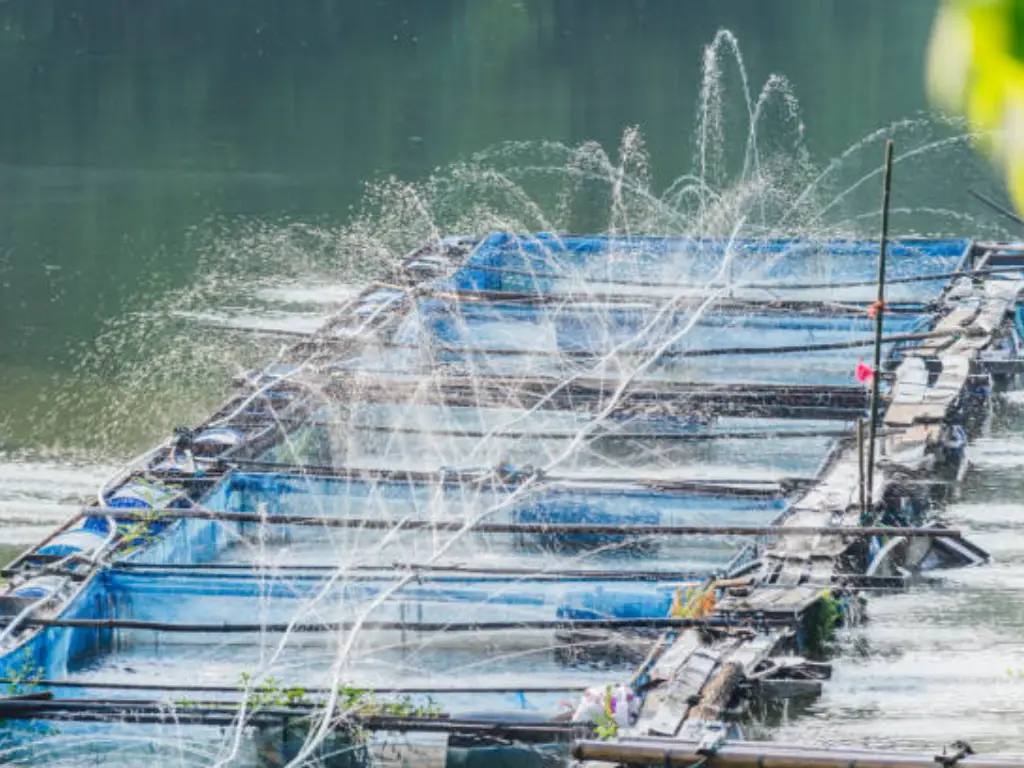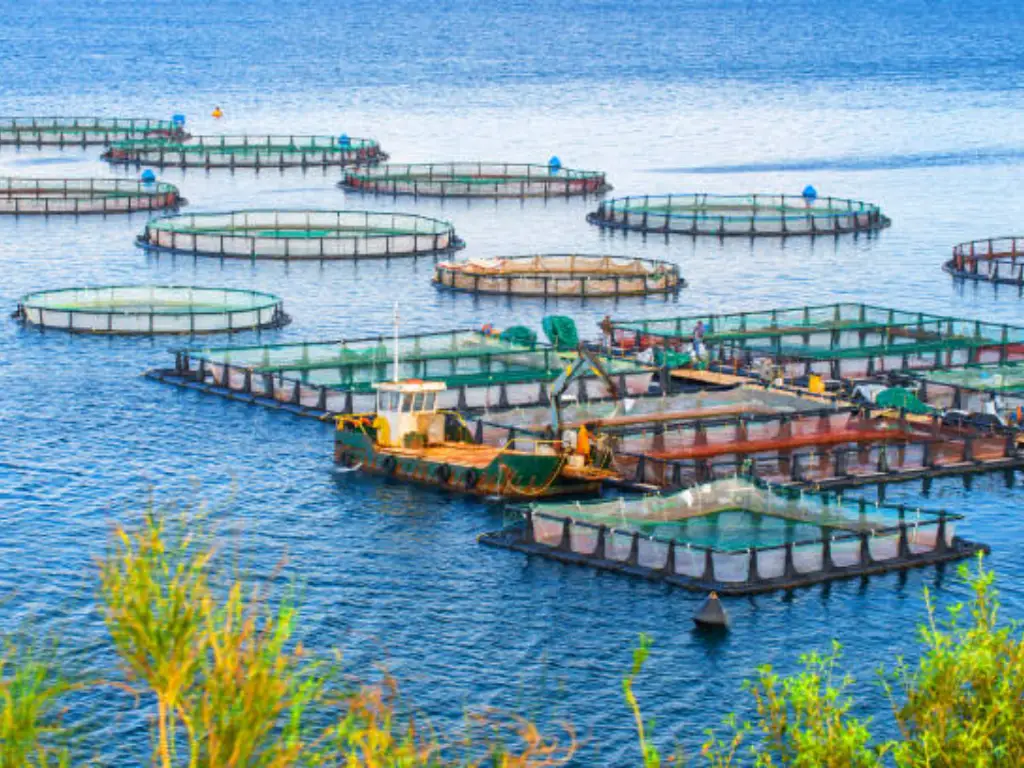การแนะนำ
Docklines are important for anyone who owns a boat. Even though they are not always noticed, these ropes keep your boat safe from wind and water. Choosing the correct docklines is important for responsible boat owners, not only for convenience. The goal of this guide is to make your decision-making process easier by giving you the right information. We will address size charts for different vessels, the types of materials used, and make sure everything works with your dock system. We want to help you secure your boat so it is ready for you when you want to go out again.

Why is It Important to Have Proper Dock Lines?
Your dock lines are very important, and not paying attention to them can cause unnecessary risks. They are the main link that keeps your boat safe and secure to the shore. If you use and set them up properly, they help protect your boat from the continuous effects of currents, the sudden blasts of winds, and the gentle changes in tides. A faulty line or an improper setup may result in anything from slight scratches on a piling to major damage to your boat or the boats around you, and it could even harm the dock.
Dock lines are responsible for handling the hidden stresses and keeping the boat steady. If your line is too weak for the load, it can snap very quickly, and if it is too stiff, it can cause damaging shocks to your boat’s hardware. For this reason, anyone who cares about safety, security, and peace of mind on the water should know how to choose, use, and maintain these key items.
Decoding Your Dock Line Size Chart
To pick the right dock line diameter, you should use a size chart. They are meant to help you start by showing the best line size for your boat’s features. As a result, the line has enough strength to handle regular mooring situations. In a reliable size chart, these two things are the most important:
- Boat Overall Length: This is the most common reference point for initial size matching.
- Boat Displacement/Weight: For heavier boats, displacement matters more than the boat length. It is determined by the actual mass that the line is holding. A boat that is short and heavy may call for a thicker line than a boat that is long and light. If the recommendations for length and displacement differ a lot, always choose the higher recommendation for displacement to avoid any risks.
Here is a typical chart that shows dock line sizes:
| Boat Overall Length | Boat Displacement | Recommended Nylon Line Diameter |
| Up to 6m (20 ft) | Up to 900 kg (2,000 lbs) | 10mm (3/8 inch) |
| 6-8m (20-27 ft) | Up to 2,250 kg (5,000 lbs) | 12mm (1/2 inch) |
| 8-11m (28-35 ft) | Up to 4,500 kg (10,000 lbs) | 16mm (5/8 inch) |
| 11-14m (36-45 ft) | Up to 9,000 kg (20,000 lbs) | 19mm (3/4 inch) |
| 14-17m (46-55 ft) | Up to 15,800 kg (35,000 lbs) | 22mm (7/8 inch) |
| 17-20m (56-65 ft) | Up to 27,200 kg (60,000 lbs) | 24/25mm (1 inch) |
Note: This table is illustrative only. When making a selection, always refer to the most recent charts from reputable manufacturers or marine chandleries. The suggestions given above are for nylon ropes; other materials would require changes.
How to Use the Size Chart: First, identify the row that corresponds to your boat’s overall length. Then check your boat’s displacement against that column. If your boat’s figures are between two sizes, or if its displacement suggests a larger recommended line diameter, it’s typically wise to go with the larger diameter line specification. For example, a 34-foot boat with a displacement of 12,000 lbs will prefer using a 19mm(3/4inch) line, which is more suited for bigger boats instead of the 16mm (5/8inch) line, which was suggested by his length alone. While the size charts are essential, there are still other things to consider when it comes to choosing dock lines.
Key Factors Beyond Basic Size Charts
Even though a dock line size chart is useful, there are other factors to keep in mind to make your choice more accurate. If you miss these, your lines might look like the right size but not be suitable for your needs.

Docking Conditions
- Permanent vs. Transient Mooring: For permanent berths, where a boat stays for an extended length of time, choose more robust lines, often increasing one diameter size from the chart’s recommendation. These lines experience and are subject to continuous, varying loads and exposure. Transient dock lines used for shorter stays can follow chart recommendations, provided the weather is moderate.
- Weather Exposure: Considerable wind, consistent storms, and powerful waves all demand more from your lines. Under these conditions, ensuring superior chafe protection along with elevation of line diameter is critical. A sheltered slip in a marina is easier on your boat.
- Tidal Range: In regions with marked tidal ranges, lines on fixed piers need to be long enough for the vessel’s vertical movement. This also means that the lines experience more “sawing” movement through chocks or around pilings, which elevates potential chafe damage.
Boat Type
- Windage: High freeboard, large cabins, and lots of canvas on some boats make them more exposed to the wind. Due to this effect, docklines may need to be thicker than what is recommended by the boat’s length or displacement.
- Keel Configuration: A deep keel in a strong current can also cause extra stress on mooring lines, but its effect is not as direct as displacement.
Mooring Location Details
It is very important to carefully examine the features of your mooring location. First, you should know that fixed docks need lines that can handle big changes in water level and possible rubbing, but floating docks move with the boat and lower the risk of vertical stress. Next, look at the dock’s hardware: check that the cleats and pilings are strong and the right size, because weak or undersized points will still make your mooring unsafe. Also, carefully inspect the dock to find any sharp, splintered, or rough areas that could cause your dock lines to wear out sooner.
Generally, the dock line size chart is suggested for use under average conditions. It is your responsibility to evaluate your specific working environment alongside the characteristics of your vessel, adapting your choice of lines to fit your needs. Ensure that safety is always a primary concern while operating within reasonable boundaries.
Choosing the Right Line Material & Type
When you have the target diameter, the next important thing to do is to choose the right line material and construction. Every option has its advantages and disadvantages, so it can be used in different situations or by people with different needs.

Line Materials
- Nylon: Nylon is the most popular and traditional material for dock lines. Nylon rope is strong and flexible, so it can handle the shock from wind gusts or waves from boats. This way, you put less strain on your boat’s equipment and the line. Yet, nylon becomes weaker by about 10-15% when it gets wet and may deteriorate if exposed to UV rays without proper treatment. Even so, its ability to absorb shocks makes it a leading choice.
- Polyester: Polyester or Dacron is also a good choice because it is strong, resists wear well, and is more stable against UV rays than nylon. It is especially strong, even when wet, and does not stretch as much as nylon. This low stretch is best for uses where little movement is needed, such as controlling the spring line. Still, because its stretch is limited, the mooring system will not absorb shocks well unless other ways to dissipate energy (such as snubbers or a flexible dock) are used.
- Polypropylene: It is light and floats, so it is simpler to pick up and return. It is also not very expensive. Yet, it is not suitable for major mooring tasks. Polypropylene is not very strong, is easily damaged by friction, and quickly loses its strength when exposed to UV rays. Although it can be used for a tiny, light dinghy in a sheltered area or as a heaving line, it’s not usually advised for main dock lines on bigger boats.
- High-Modulus Synthetic Fibers (e.g., Dyneema®, Spectra®, Vectran®): They are recognized for being very strong, almost non-stretchy, and light. They are expensive and usually more than what most recreational boaters or dock line users need. As they do not stretch, the shock loads are sent straight to the hardware, so the whole mooring system needs to be carefully planned to avoid damage.
Line Construction
- 3-Strand: This is the traditional way of making a twisted rope. It is usually the least expensive and gives a lot of stretch, especially if it is made of nylon. It is easy to cut and splice this material, which makes it simple to customize eye loops. The hands may feel a little more irritated.
- Double Braid: The core of this construction is braided, and it is then covered by another braided layer, usually made from the same material. It is more durable than a 3-strand of the same size, offers great resistance to wear, feels nice and smooth, and coils up neatly. Double braid splicing is more difficult than 3-strand, but it creates a very neat and strong finish.
- Mega Braid (e.g., 12-Strand Plaited): These lines are common in thicker sizes, are very strong, flexible, and do not easily kink. They are commonly used on bigger boats because they handle well.
If you use a material other than nylon, think about how it might influence the way your boat is moored. If you use polyester for all lines, check that your boat and dock hardware can handle the extra force from shock loading, or you could add snubbers to help absorb it.
Determining Line Length and Quantity
Getting the right number and length of docklines is important for a safe and flexible way to tie up your boat. Even though the details may differ, there are common guidelines that are accepted everywhere. It is better to have a line that’s a bit longer than you need, instead of one that is too short and causes problems.

Line Length Guidelines
- Bow and Stern Lines: They are the lines that go from the bow and stern of the boat to the dock. The usual rule is that the length of the oars should be between 1/2 and 2/3 of the boat’s total length. Many experienced sailors like to use a line that is as long as the boat’s beam for these lines, especially when tying the stern line in a small space.
- Spring Lines (Forward/After): Spring lines (forward/after) are necessary to stop the boat from surging or moving too far forward or backward in its slip.
- Forward (Bow) Spring Line: This line is attached to a cleat on the boat and runs to a cleat on the dock.
- After (Stern) Spring Line: This line is attached at the back of the boat and runs to a cleat at the dock.
- For length, spring lines should generally be longer, typically 2/3 to the full length of the boat. This extended length facilitates better angles for more effective control.
- Breast Lines: These are short lines that go straight from the boat to the dock to keep the boat close to the dock. While using breast lines on fixed docks, be careful and leave enough slack for the boat to move with the tide.
Quantity of Lines
In calm weather, it is usually advised to use four lines: two bow/stern lines and two spring lines. In most cases, six lines are used for permanent mooring or in open areas: two bow lines, two stern lines, and two spring lines. With this setup, there is extra protection and the ability to handle different types of forces. Lines may need to be added in extremely rough weather or the case of larger vessels.
It’s a good idea to always have at least two extra lines that are quite long. They are very useful for unusual short-term mooring, for kedging, or when you need an emergency anchor.
Dock Lines & Your Dock System Compatibility
Your docklines and the dock system are meant to work as a team. How your lines connect with the dock’s hardware, such as cleats, chocks, and pilings, as well as the dock’s strength and condition, is very important for a secure mooring. Dock lines can wear out or lose their grip more quickly if the dock’s cleats are too small, the chocks are rough, or the dock edge is worn out. How well the dock is built, designed, and maintained is equally important as your lines.
Different types of docks require different ways of mooring. When a dock is fixed to the ground, it is important to adjust the boat’s lines in tidal areas since the boat rises and falls while the dock remains still. The movement of the tide can rub against the boat, so longer lines are needed to avoid them becoming too tight or too loose. Weathered timber, concrete, or steel can increase the chances of abrasion.
On the other hand, floating dock systems adjust to changes in water levels. Because of this, properly set lines on a floating dock experience much less strain and sawing from the water’s movement than those on fixed docks. So, the docklines can keep a steady tension, which reduces the stress caused by the tides.
Modern floating docks are made to handle waves better than traditional rigid structures. This results in a smoother movement for the boat, which helps prevent sudden and harsh loads on the docklines and the boat’s hardware. Good floating docks usually have smooth edges, which may help prevent chafing. A dock system that takes into account these forces gives you a firm base and helps keep your mooring safer and kinder to your lines. Selecting a dock system that matches and supports your mooring lines is a good idea for safety and lasting use.
Find the Best Plastic Floating Dock System in Hisea
Hiseadock has over 10 years of manufacturing experience and services in more than 80 countries and regions worldwide. With state-of-the-art manufacturing facilities, including over 5,000 square meters and four state-of-the-art production lines, as well as special equipment such as large rotomolding and blow molding machines, Hiseadock is able to achieve quick shipment of standard products (7-10 days of production without inventory) and lead times of approximately 10-15 days for custom orders.
















Pro Tips for Safe & Secure Mooring
Besides choosing the proper lines and having a suitable dock, the way you moor is very important for your safety and security.
- Prioritize Chafe Protection: Strive to recognize any possible chafe and chafe protection. Make sure to safeguard your lines with chafe protection like old fire hoses or commercially available protectors, and specialized chafe gear like webbing for tubular nylon rope. Regularly inspect and replace chafe gear as it wears.
- Master Essential Knots: To be able to secure and prevent movement while mooring, a few sturdy knots should be used:
- Cleat Hitch: This is the usual way to secure a line to a cleat. Tie it so it will not slip, yet you can still untie it easily under pressure.
- Bowline: Makes a loop at the end of a line that won’t slip or jam, which is perfect for connecting to pilings or mooring rings.
- Round Turn and Two Half Hitches: This is another way to secure a line to a piling or ring.
- Optimize Line Placement: The way lines are placed can greatly increase security.
- Crossing Spring Lines: For best control when slipping, run your spring lines from the bow to an aft cleat and from the stern to a forward cleat. This results in an “X” shape that greatly limits how much the subject can move.
- Mind the Tide (Fixed Docks): If you are mooring to a fixed dock in areas with tides, make sure your lines are loose enough. As a result, the boat can move up and down with the tide without facing too much pressure or becoming loose when the tide is low. Even though floating docks help, the lines should still be adjusted to give a comfortable amount of tension.
- Ensure Fair Leads: Make sure your lines are attached to cleats and chocks with a fair lead. As a result, the line does not rub against any sharp edges or obstacles, which helps it last longer and work at its best.
- Prepare for Storms: Set reasonable expectations and prepare for potential heavy weather. During unfavorable weather, significantly increase the number of mooring lines used.
- Double up on lines where possible.
- Longer lines should be used for maximal stretch to reduce strain angles.
- Deploy all available chafe protection.
- Make sure that the lines on your boat (i.e., primary winches, well-backed cleats) and on the dock are brought to the strongest points.
- Utilize Snubbers: Use rubber snubbers to absorb shock loads if your lines have low stretch (such as polyester) or if you’re in a more active mooring area. These changes will make it softer and lessen the strain on the hardware of your boat.
Maintaining Your Dock Lines for Longevity
To keep your dock lines in good shape and working well for a long lifespan, you should pay attention to them regularly. A line that is not maintained is not dependable.

Inspect Regularly
Make it a habit to visually inspect your lines before each use and more thoroughly periodically. Look for:
- Chafe: Fuzziness, worn spots, or areas where the strands are abraded.
- Cuts or Nicks: Any damage that compromises the integrity of the strands.
- UV Degradation: Lines may become stiff, brittle, or discolored. Nylon rope might show a powdery residue when flexed.
- Chemical Contamination: Discoloration or weakening from exposure to fuel, solvents, or acids.
- Internal Wear: Feel along the line for inconsistencies in diameter, lumps, or excessive stiffness, which can indicate internal yarn breakage, especially in braided lines.
Clean Periodically
Salt crystals, sand, and dirt can work their way into the fibers of a line, acting like internal sandpaper and accelerating wear. Rinse your lines with fresh water regularly. If they’re particularly dirty, you can wash them in a machine (use a mesh bag to prevent tangling, on a gentle cycle with mild detergent) or by hand in a large tub. Rinse thoroughly.
Store Properly
When not in use, especially during the off-season, store your lines in a cool, dark, dry place. Coil them neatly and hang them or store them loosely in a ventilated bag. Avoid leaving them piled on concrete floors or in direct sunlight for extended periods.
Care for Line Ends
Prevent ends from unraveling by whipping them with sailmakers’ twine or by carefully heat-sealing synthetic line ends with a hot knife or flame (exercise caution and do this in a well-ventilated area).
Know When to Retire a Line
Don’t push your luck. If a line shows significant signs of wear, excessive stiffness, reduced diameter in spots, or has been subjected to extreme shock loads, it’s time to replace it. Even with good care, lines have a finite working life. Trying to squeeze a few more months out of a tired line is false economy when your vessel’s safety is at stake.
บทสรุป
It is important for all boaters to know how to choose and handle docklines properly. All your decisions, including picking the right dock line size and considering the length of your boat, how materials, weather, and your dock interact, help keep your vessel safe and secure. They help your boat reach the shore, showing that you are ready for any situation.
When you know these principles, you feel more confident about your decisions. Choosing the right lines, using them well, and keeping them in good shape make them dependable helpers. Properly using and caring for your docklines for a long time is a good way to protect your boat and feel secure while sailing.





